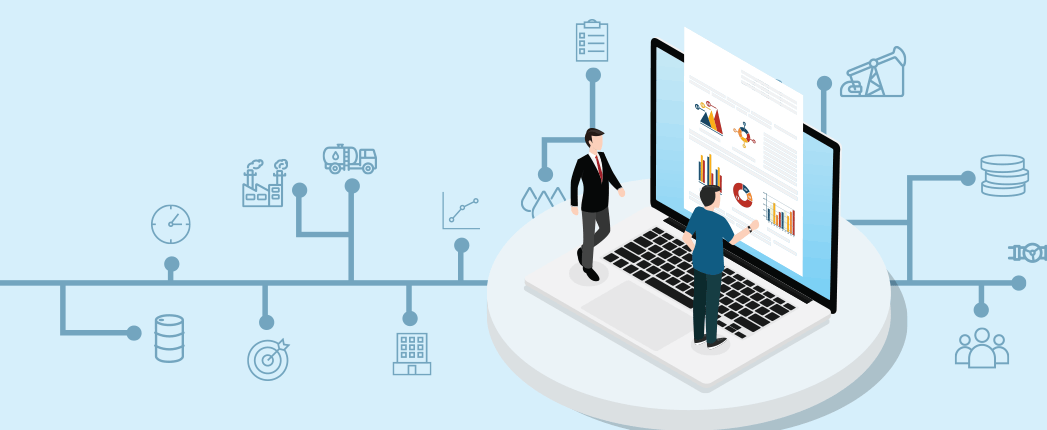
Embracing Technology in Lubricant Distribution
The lubricants business has moved through a period of considerable change over the past three decades. Among the most notable is the transformation of the business brought about by consolidation. Merger and acquisition activity, exits and other factors have sharply reduced the number of distributors in business, and among those remaining, the volume of lubricants sold by many has reached what would have once been considered territory of only the majors.
In the process, distributors have strengthened alliances, expanded geographic footprints, and become significantly more efficient and effective. In addition, the number of private label lubricants sold by distributors has grown, and for some has reached a level of national recognition.
While other remarkable changes have reshaped the lubricant business and continue to do so, the adoption of digital technology may prove to be the least conspicuous yet the most impactful moving forward.
Digital technology has been a part of lubricant distribution for decades. It initially included such operational hardware as phones, faxes, computers, printers, handheld devices, digital cameras, dial-up modems, tank monitors and other digital devices. In addition, software was used for accounting, inventory management, creating sales and marketing materials, generating reports, managing contact lists and calendars, and handling other tasks. Further, many lubricant distributors had billboard-type websites early on to let the world know they existed.
While these technologies helped distributors become more efficient, the digital revolution in lubricants partly took root when software was developed to integrate many back-office tasks into a seamless software suite. These tasks included order entry, accounts receivable, billing, collection, inventory management, purchasing, dispatching and routing, customer relationship management, enterprise resource management, and other business functions. While some of the back-office software was generic, some was purpose-built to address the needs of lubricant distribution.
Instead of having multiple—and often isolated—software platforms that often didn’t speak the same language in-house or communicate well with software outside the gate, distributors had the beginnings of digitally integrated solutions. These linking technologies enabled distributors to streamline back-office transactions and logistics, and electronically connect them with their customers, their assets and the distributor’s supply partners.
This opened a floodgate of real-time data flow and the opportunity to mine massive amounts of data with analytics and deploy artificial intelligence to help distributors react faster, plan smarter, reduce expenses and adjust to supply chain disruption. It also enables distributors to optimize their business-to-business transactions and improve the customer experience, as well as cross-purpose platforms for business-to-consumer sales and marketing.
From turning orders to cash, a growing number of lubricant distributors are deploying and integrating end-to-end digital technology to seamlessly manage their businesses.
One example is seen in PetroChoice’s Gold Platform. The Gold Platform provides a clear and highly sophisticated line of sight to customers’ needs and an optimized path to anticipate, plan for and meet those needs. “Rather than waiting to hear a customer ask ‘Where’s my stuff?’, the platform keeps them informed and empowers customers with 24/7 answers not only to where it is, but when it will get there,” said Celeste Mastin, PetroChoice CEO. “While this benefits customers, it also benefits PetroChoice in terms of operational efficiencies and the opportunity to differentiate its service offerings.”
Adding to this, Daniel Oehler, executive vice president of marketing and e-commerce with RelaDyne, explained, “RelaDyne plans to lead the digital paradigm shift by providing our customers the access to information they deserve and expect. The future leaders of this industry will be those that leverage technologies to drive efficiencies from e-commerce through their supply chain and logistics. Our customer experience will be the focal point of our journey and investments.”
Another innovative example was provided by Dave Klinger, president of PPC Lubricants and Drydene Performance Products. “PPC and DPP have our own [information technology] staff and analytics department, wherein the IT programmer and director of IT work together to build our in-house portal and sync data analytics across all departments in real time, in an ERP that we control and modify every day to be more functional to provide the best user experience to every department and our customers,” Klinger said.
While there are numerous other examples of how lubricant distributors are adopting digital technology to optimize efficiency and streamline the order-to-cash process, it’s also important to point out that the efficiencies from technology don’t necessarily come at the cost of customer intimacy, as some believe. According to Tom Mangano, president of Rax Inc., a leading software supplier to the petroleum distribution market, “Customer intimacy is often enhanced with digital technology.”
Rather than the sales force spending valuable face time with customers to take and track down orders, address discrepancies, or discuss how much the customer owes, Mangano said, technology “empowers the sales force with a wealth of information about accounts prior to and during sales calls, enabling sales reps to better answer questions on the spot, cross-sell and provide true value to the sales call. This means more time for sales reps to build strong consultative relationships with existing customers and call on more prospects.”
While we have seen a great deal of change over the past decades resulting from industry consolidation, digital technology is ushering in a new phase of transformation to lubricant distribution. In today’s intensely competitive lubricants market, digital technology will provide a significant competitive advantage to those that have the resources and management skills to embrace and integrate technologies and blend them with human interactions to drive growth through both operational efficiency and customer intimacy.
Tom Glenn is president of the consulting firm Petroleum Trends International, the Petroleum Quality Institute of America, and Jobbers World newsletter. Phone: (732) 494-0405. Email: tom_glenn@petroleumtrends.com.